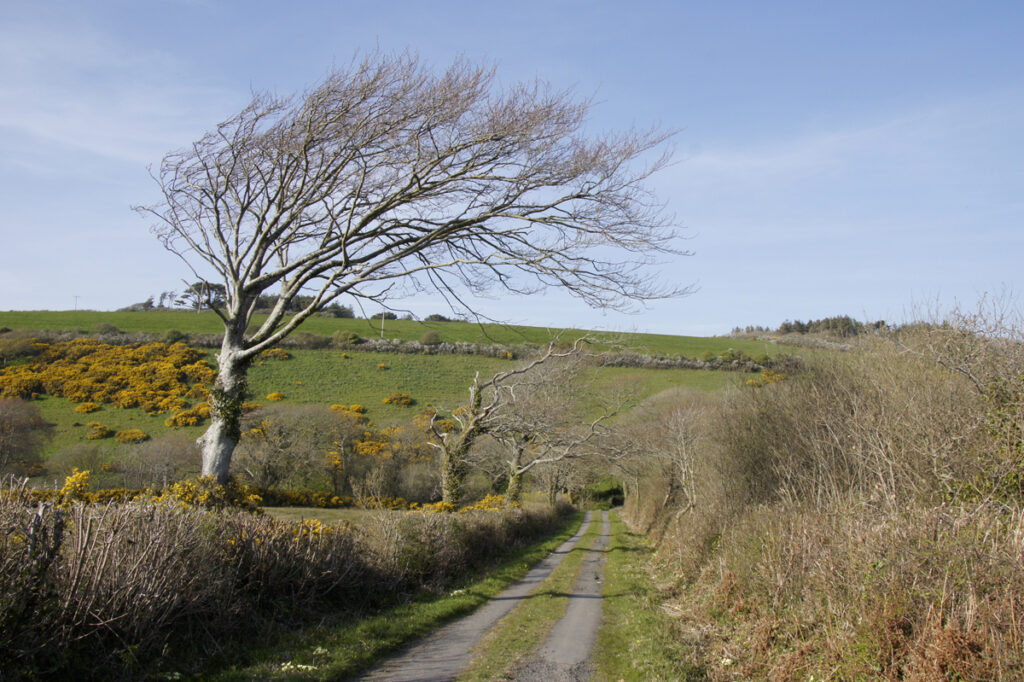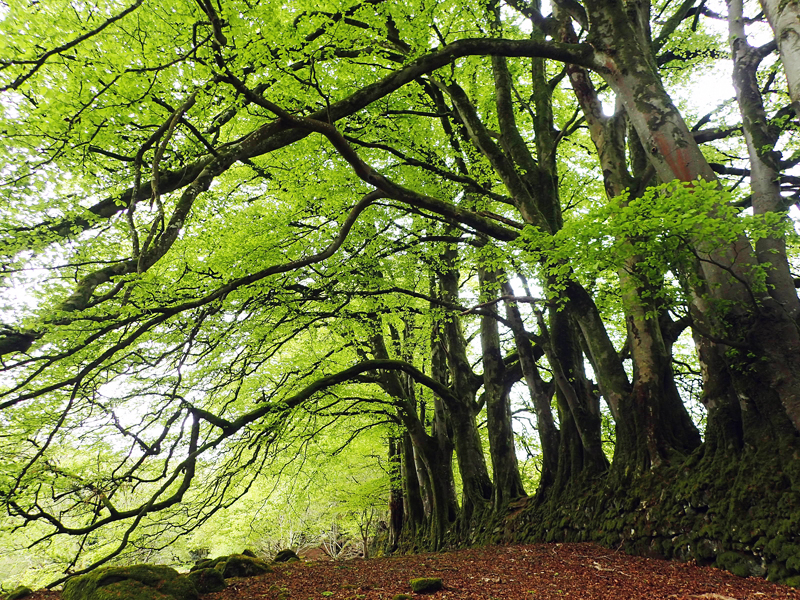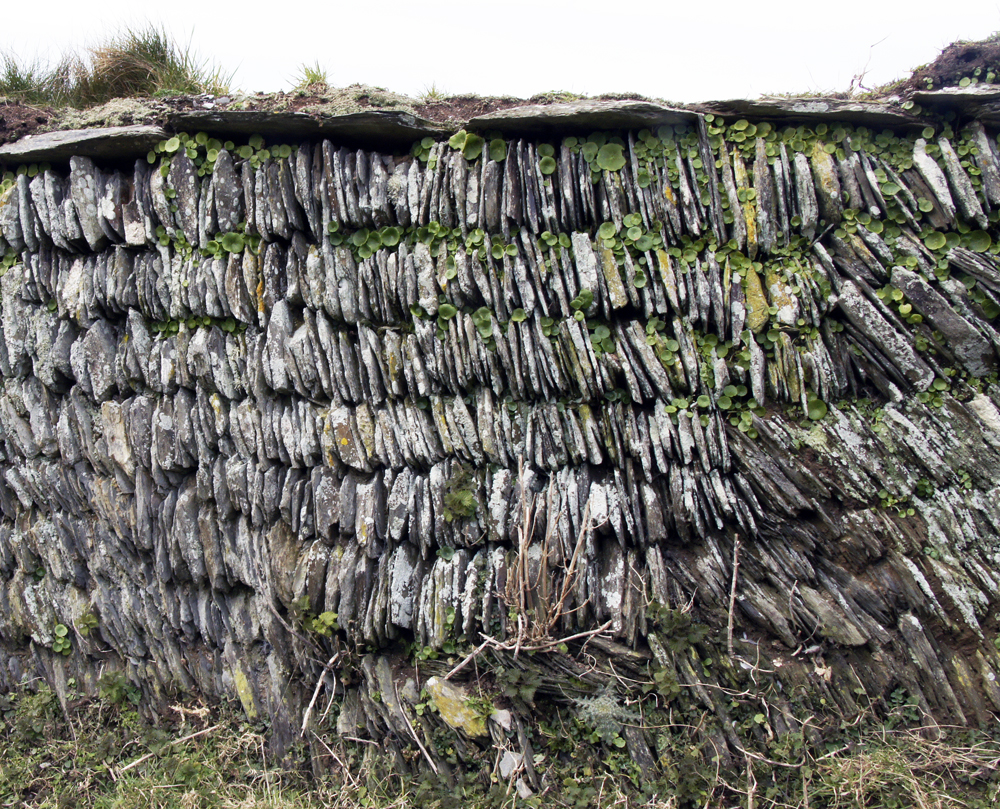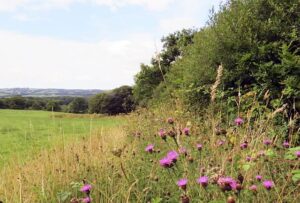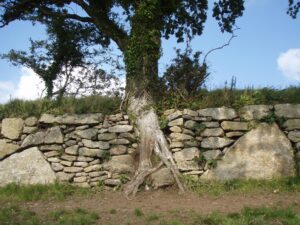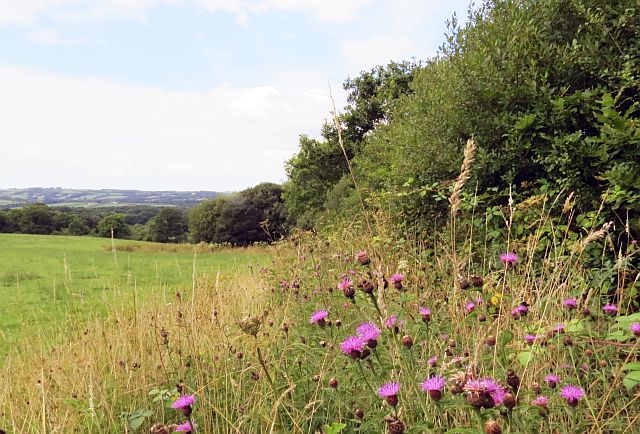What wildlife-rich looks like:
A continuous network of thick, bushy hedges of various heights. Most are on banks which can be stone-faced in some areas. A wide range of woody native shrubs including hawthorn, blackthorn and hazel but varying with soils and climate. Large mature trees (standards) are common. Hedge bases and margins are flower rich or have tussocky grasses. They are especially beautiful in the spring with primroses, violets, orchids, red campion, greater stitchwort and bluebells. Shrubs, trees, banks and margins provide shelter, nesting habitat and food (berries and flowers) and are full of birds and buzzing insects.

